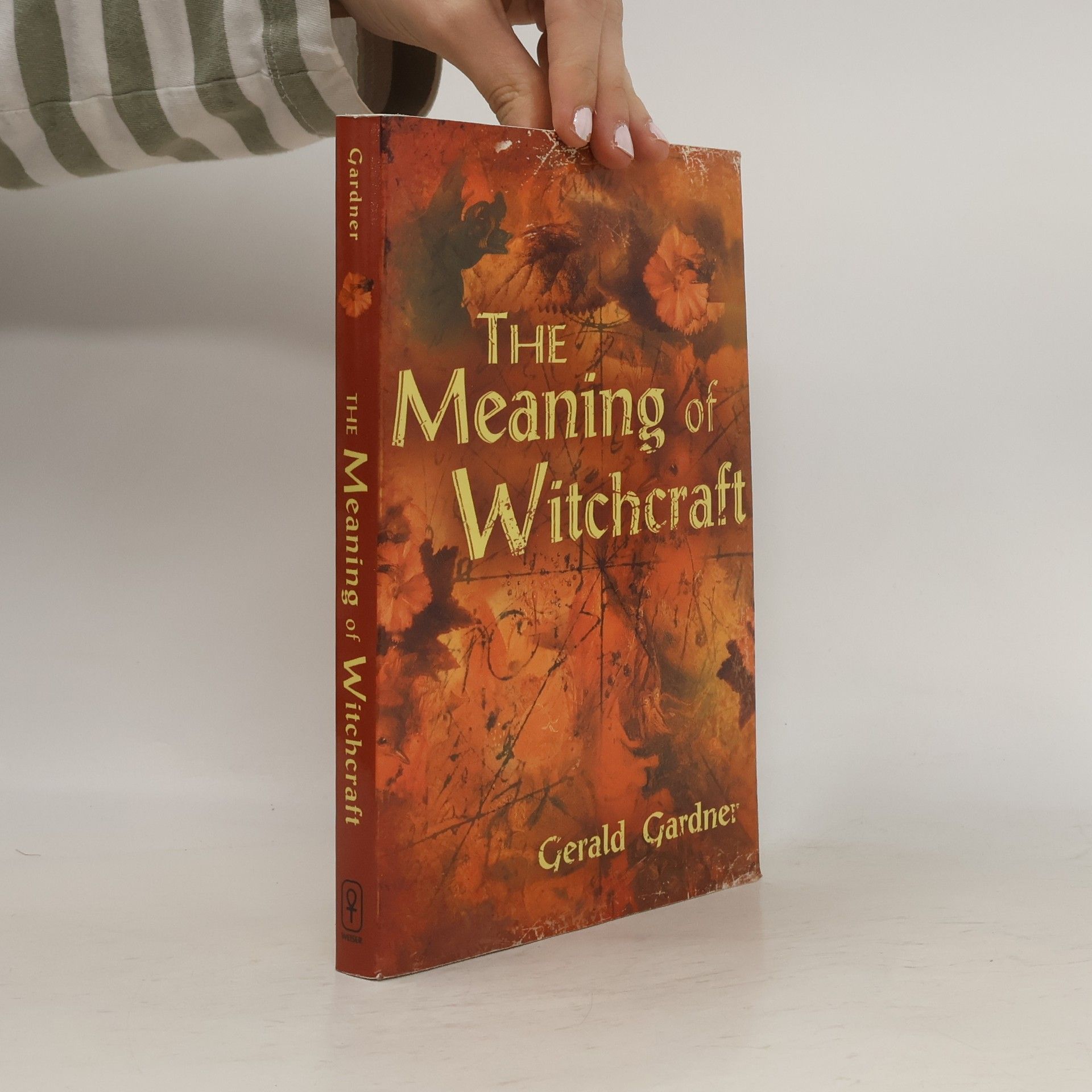The incredible biography of Marvin Hamlisch, the second person in history to be awarded the PEGOT (Pulitzer, Emmy, Grammy, Oscar, Tony)!
Gerald Brosseau Gardner Books
Gerald Gardner was instrumental in bringing Wicca, a Neopagan religion, to public attention in Britain. An amateur anthropologist and archaeologist, writer, and occultist, Gardner claimed to have discovered and propagated a surviving pre-Christian pagan witch cult into which he had been initiated. Fearing the religion would die out, he actively spread it by initiating others and training numerous High Priestesses. His writings, including religious texts and novels, along with his Museum of Magic and Witchcraft, have left an enduring legacy on the modern Wiccan and Neopagan movement, earning him the title "Father of Wicca".






Thought to be the father of modern witchcraft, Gerald Gardner published The Meaning of Witchcraft in 1959, not long after laws punishing witches were repealed. It was the first sympathetic book written from the point of view of a practicing witch. The Meaning of Witchcraft is an invaluable source book for witches today. Chapters include: Witch's Memories and Beliefs, The Stone Age Origins of Witchcraft, Druidism and the Aryan Celts, Magic Thinking, Curious Beliefs about Witches, Signs and Symbols, The Black Mass, Some Allegations Examined. The Meaning of Witchcraft is a record of witches' roots-and a tribute to a founding pioneer with the courage to set that record straight.
High Magic's Aid
- 312 pages
- 11 hours of reading
Delve into the world of Witchcraft and High Magic! Jan, Olaf, and Thur attempt to perform Ceremonial Magic at a time when delving into these Arts could cost them their lives. Unfortunately, they discover they are missing an integral aspect of High Magic and are doomed to failure unless they find the Witch of Wanda to initiate them and train them in the secrets of Witchcraft. Dr. Gerald B. Gardner, the Father of Modern Witchcraft and Wicca, writing under the nom-de-plume 'Scire', brings to life this medieval tale of Ceremonial Magic and Witchcraft. Originally published in 1949, this classic and historic work of fiction will take the reader into a world, not unalike our own, where magic is real and Witches guard their secrets. "High Magic's Aid is a must-read for anyone interested or involved in Witchcraft and Wicca. More importantly, it is a novel that will hold your attention until you read 'The End.'" - Karen Dales, Award Winning Author.
Witchcraft Today
- 180 pages
- 7 hours of reading
Exploring the origins and evolution of witchcraft, this seminal work is regarded as essential reading for Wiccans and those intrigued by this spiritual path. It offers an in-depth look into the foundations of Wiccan beliefs, making it a definitive guide for practitioners. The reproduction of the first edition includes a Foreword by Dr. Margaret Murray and an Introduction by Raymond Buckland, along with additional photographs. This book is a valuable resource for anyone seeking an authentic historical understanding of witchcraft.
A Goddess Arrives
- 390 pages
- 14 hours of reading
Explore the rich tapestry of ancient magic and the worship of the Goddess, revealing how these elements intertwined in historical practices and beliefs. This book uncovers the rituals, symbols, and spiritual significance of the feminine divine, offering insights into the cultural contexts that shaped these traditions. Through detailed analysis, readers will gain a deeper understanding of the powerful role that magic and goddess worship played in ancient societies.
„Nie możesz przejść z ukrycia do manifestacji inaczej niźli dzięki mocy imienia JHVH… Po bezkształtnej otchłani i ciemnościach nadchodzi światło… Jam jest światłem, które powstaje w ciemnościach. Jestem egzorcystą w trakcie egzorcyzmu. Ukaż się mi w swej postaci, gdyż władam siłami przynoszącymi równowagę… TY MIĘ ZNASZ, WIĘC UKAŻ SIĘ MI. (…) Poruszenie w kolumnie dymu stało się wyraźniejsze i gwałtowniejsze. Niespotykanej urody twarz, wielokrotnie większa od ludzkiej, ukazała się na zachodniej krawędzi kręgu. Jej ciało było niestabilne, pojawiało się i znikało. Na owej twarzy widniał wyraz ponurego rozdrażnienia, zmieszanego z zaskoczeniem, które w tej sytuacji wyglądało niemal komicznie. Tak właśnie wyglądał Bartzebal”. Thur, mag i medyk, przywołuje demona Bartzebala, by wspomógł grupę przyjaciół w ich dążeniu. Dzięki „wysokiej magii” Geralda Gardnera, autor odkrywa tajemniczy świat magii i kowenów czarownic, ujawniając sekrety Rzemiosła. Wykorzystując rytuały z Klucza Salomona i innych manuskryptów, tworzy wiarygodny obraz praktyk magicznych. Książka ma również inny wymiar – to podróż młodego człowieka, który pragnie odzyskać zagrabiony tytuł i majątek. W trakcie tej podróży odkrywa przede wszystkim samego siebie.
„Wicca“ ist die Wiederbelebung eines europäischen Schamanismus’ und des weiblichen Gottesbildes. Und es ist eine Lebensphilosophie, die sich respektvoll und wertschätzend mit der Natur verbunden fühlt. Gerald B. Gardner, „der Vater der Wicca“, war selbst Initiierter eines Covens und konnte mit deren Erlaubnis diese uralte Traditionslinie fortsetzen. Mit diesem Buch übertrug er die alten Riten und Zeremonien in die heutige moderne Zeit. Von „Die Weisheit der Wicca“ profitiert ein jeder Leser, unabhängig von der speziellen Ausrichtung innerhalb der Wicca-Tradition, die sie oder ihn interessiert: Traditionelles Wicca wie z. B. Gardnerian oder Alexandrian Wicca, „Priester“ und „Priesterin“, Feministische Wicca, Neo-Wicca, Eclectic Wicca, Solitary Wicca usw. Lebendige Sprache und beeindruckende Sachkenntnis machten dieses Buch zu einer wahren Legende. Diese neue Edition enthält ein zusätzliches Vorwort des international anerkannten Gardner-Biografen Philip Heselton.